Selling your handmade creations is such a heartwarming experience. If you’ve been dreaming of turning your sewing hobby into a little business, learning how to sell DIY stuffed animals online is a great place to start. Handmade plush toys possess a cozy charm and personality that no factory can replicate. With the right steps, your bears, bunnies, and other cuddly friends can find happy homes all over the world.

Understand the Market for DIY Stuffed Animals
Before you open your online shop, it helps to understand who your future customers might be. Some people buy handmade plush toys as sweet gifts for children, while others collect teddy bears and love supporting independent artists. Many shoppers today simply prefer items made with care — something unique, not another factory product.
Take a little time to explore Etsy or Pinterest and see what’s trending. You’ll spot ideas like memory bears made from old baby clothes or, beautifully, from the clothing of beloved family members who have passed, creating a keepsake full of memories. You might also see vintage-style teddies or personalized plushies with names embroidered on them. That kind of research can spark inspiration for your own designs and help you see what people value most.
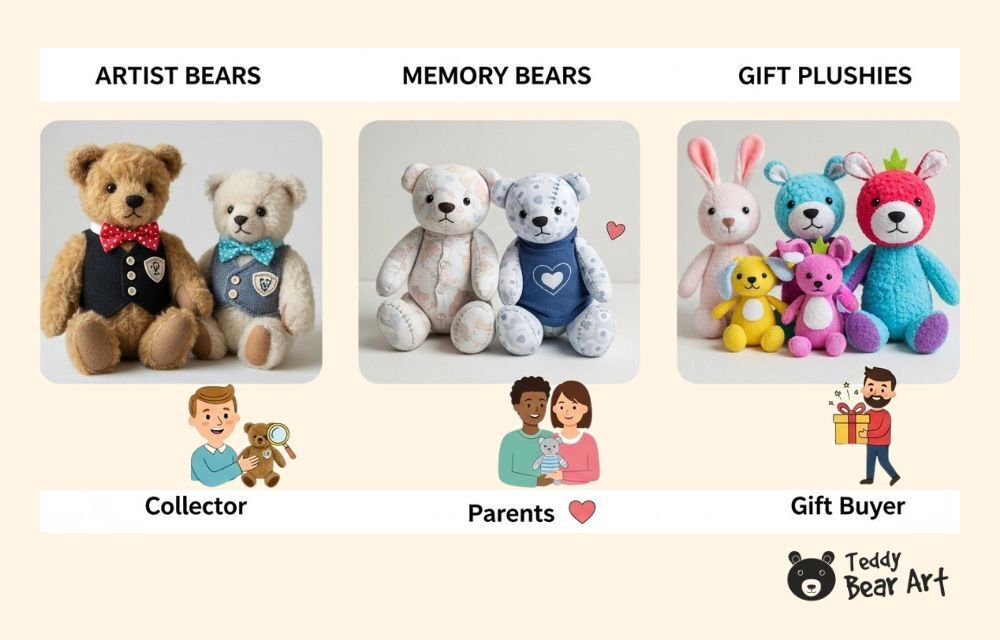
Get Your DIY Stuffed Animals Ready to Sell
Every detail counts when you’re selling handmade toys. Make sure your stitching is neat, seams are strong, and the toy feels soft and well-stuffed. Handmade pieces carry emotion, and small touches — a tiny bow, a special fabric, or embroidered eyes — help your creations stand out.
Your photos will do most of the talking online, so make them shine. Use natural daylight and a simple background. Try adding small props — a cup of tea, a piece of lace, or a cozy blanket — to tell a story.
And don’t forget personality! Give each toy a name or a little story. Saying “Meet Rosie the shy bunny who loves garden naps” instantly creates a connection.
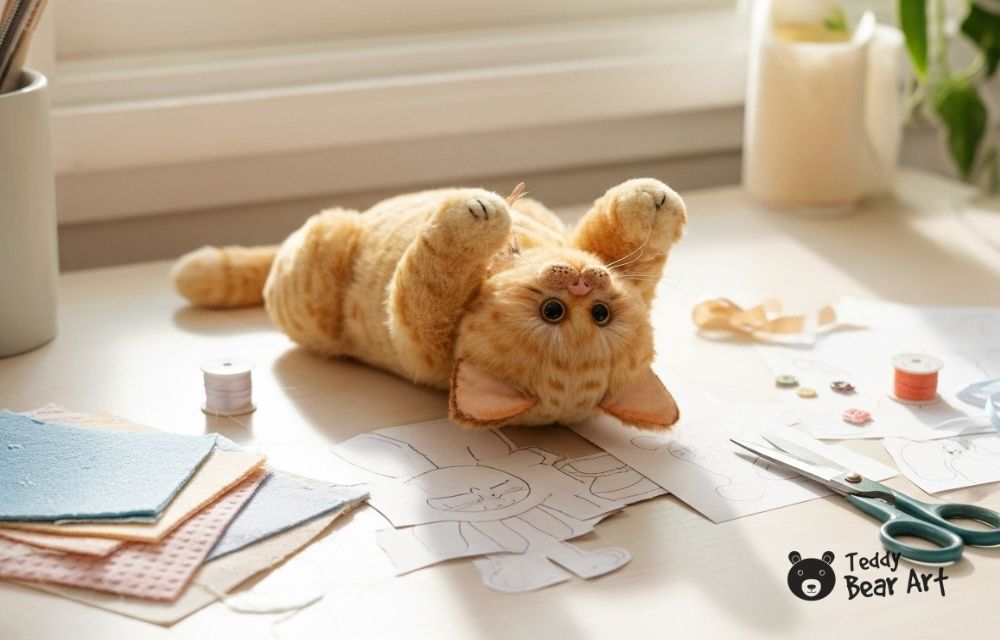
How to Price Your Stuffed Animals
Setting the right price for your handmade toys can be one of the hardest parts of selling your work. We put so much heart into every creation that it can feel strange to attach a price tag. Still, it’s important to make sure your time and talent are valued fairly.
Start by thinking about the basics — the cost of materials like fabric, stuffing, thread, and accessories. Then consider how much time it takes you to make one toy from start to finish. Your time isn’t just hours spent sewing — it’s your experience, patience, and attention to detail.
A good way to understand the market is to look at how other artists with a similar style and skill level price their work. Don’t copy their numbers exactly, but use them as a reference. Notice which toys sell faster and how their listings and photos are presented.
Remember, handmade buyers aren’t paying only for fabric and thread — they’re paying for uniqueness, care, and the warmth of your hands. So don’t underprice yourself just to please everyone. Instead, offer true value: quality, originality, and a personal touch.
If you’re unsure, try experimenting a little. List a few toys at slightly different price points and see where your audience responds best. Over time, you’ll find that comfortable middle ground — the one where it feels good for you to sell and joyful for others to buy.
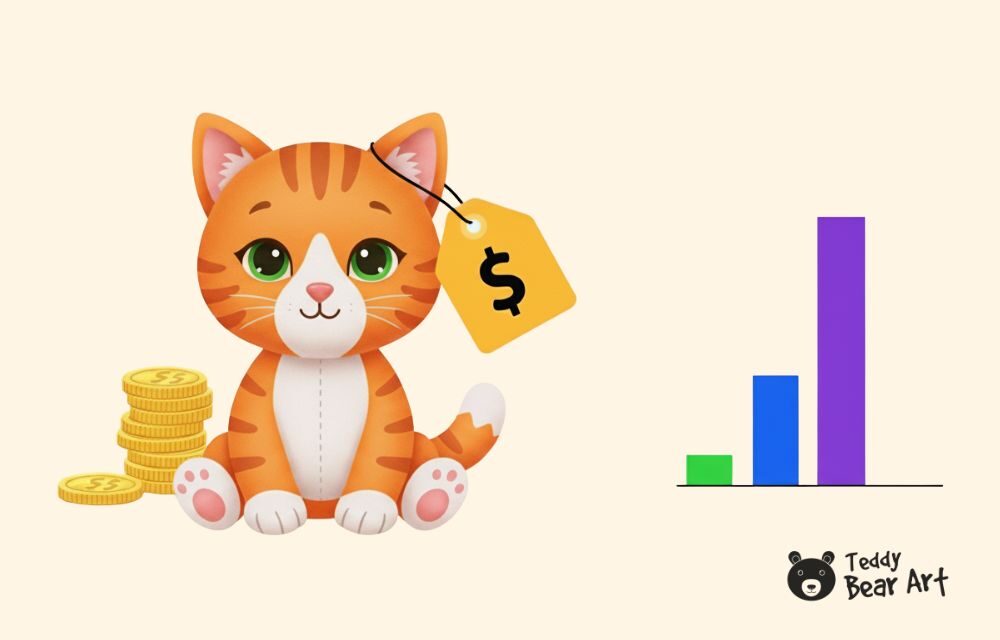
Where to Sell Handmade Stuffed Animals Online
The platform you choose really depends on what kind of toys you make and who your audience is.
If you create artist or collectible bears, check out Tedsby and BearPile. These sites have communities of collectors who truly appreciate handcrafted work. Great photos, detailed descriptions, and sharing your story as a maker are key. Buyers on these platforms are often looking for “one of a kind” creations — unique toys made with care and personality.
For memory bears — toys made from a loved one’s clothing — Etsy works really well. People often look for meaningful gifts: bears made from baby clothes, wedding fabrics, or cherished keepsakes. The key is to describe these items warmly and respectfully, highlighting the special story behind each one.
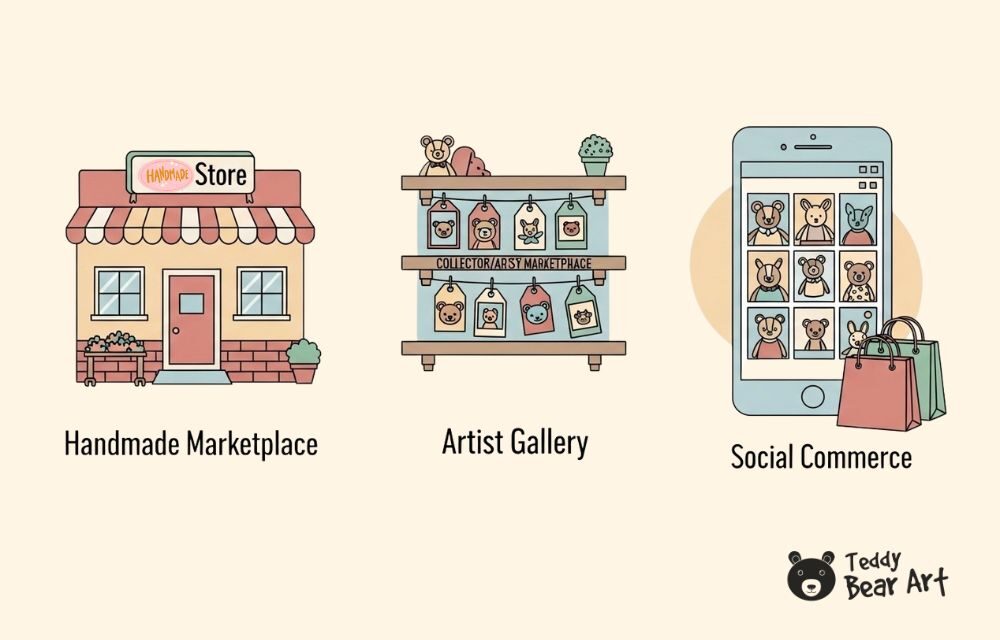
Instagram and Pinterest are also excellent for showcasing your work. Share your creative process, tell the stories behind your toys, and post short videos. People love seeing real makers at work, not just product photos.
Don’t overlook Facebook either. Many artists find their first buyers through groups focused on handmade toys or collectible plush. Personal interaction helps build trust and makes people feel confident ordering a special piece.
The most important thing is to choose a platform where you feel comfortable and where your audience is. One vibrant, heartfelt shop will always do better than ten lifeless listings without attention or care.

How to Present and Promote Your Toys
Create Listings That Tell a Story
Your product listing isn’t just a list of details — it’s a way to share your toy’s little world. Describe how it feels in your hands, what inspired you, and how it might make someone’s day brighter.
Instead of “handmade plush bear,” write something like:
“Oliver the Bear is stitched from soft mohair and filled with recycled fiberfill. He’s calm, cuddly, and ready for endless hugs.”
That kind of warmth helps people connect to your work and see the heart behind it.
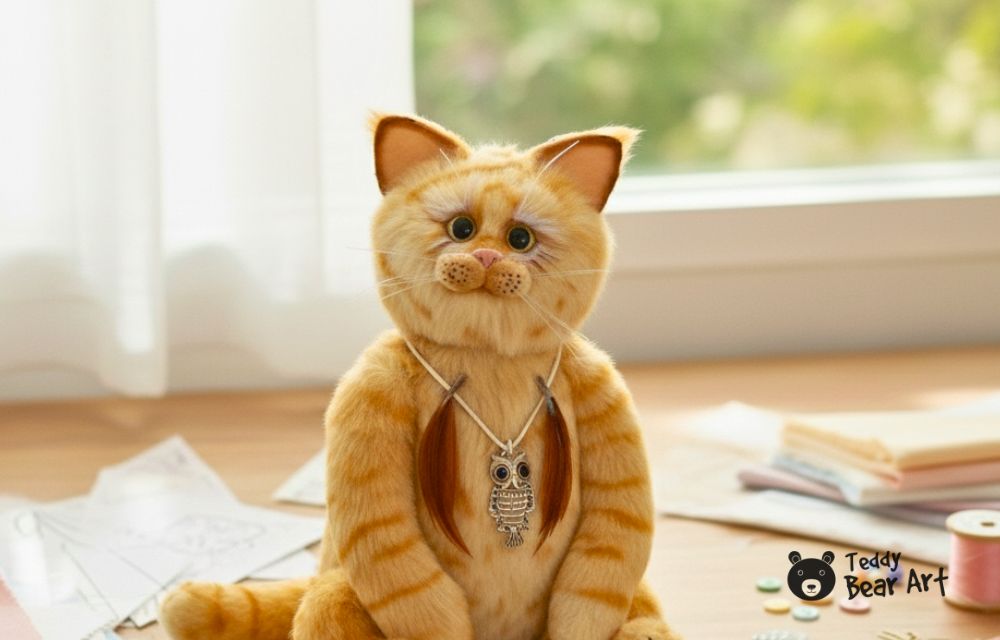
Promote Your Handmade Plush Toys
Marketing doesn’t have to be scary or complicated. Just show people the story behind your toys. Record a short video while you sew or share a photo of your workspace. Talk about what inspired a new design.
Social platforms like Instagram, Pinterest, and TikTok love creative content. A simple clip of you adding the final stitch or brushing a teddy’s fur can attract hundreds of views. Use friendly hashtags like #handmadeteddy or #stuffedanimalartist.
If you’d like a more direct connection with your fans, start a small email list. Offer something free — an accessory for a bear or a printable gift tag — and send updates when you release new toys. It keeps your community close and engaged.
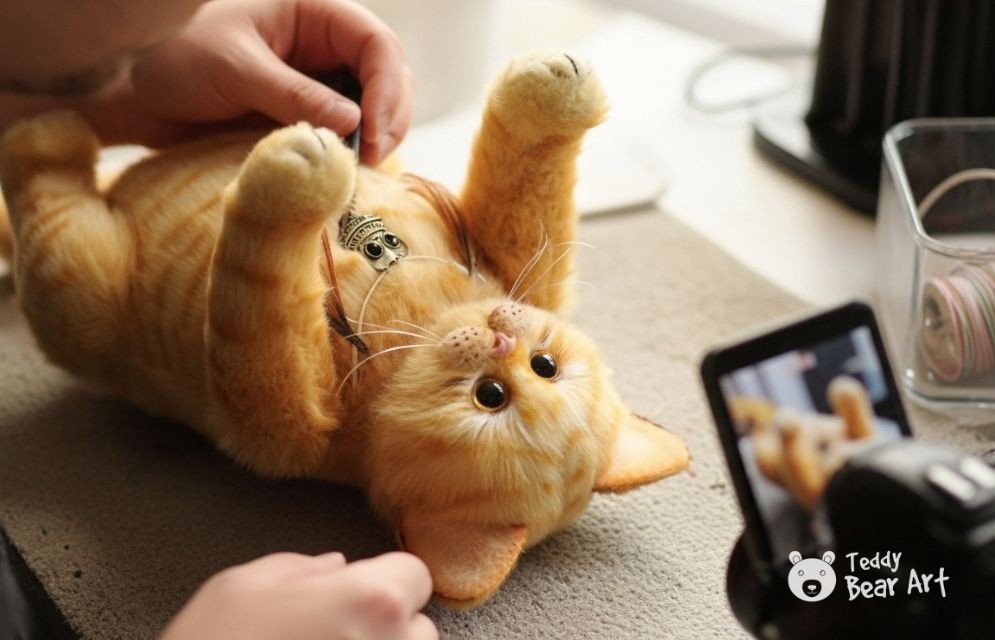
Package and Ship with Care
When a customer opens your parcel, that’s the moment your work really shines. Use soft tissue paper, a thank-you note, or a pretty ribbon. Even a small handwritten tag saying “Made with love” can make someone’s day.
Try to use eco-friendly packaging when possible — buyers appreciate thoughtful choices. Keep shipping simple: weigh your packages, print labels at home, and choose reliable carriers. For international orders, clearly state delivery times and any customs notes.
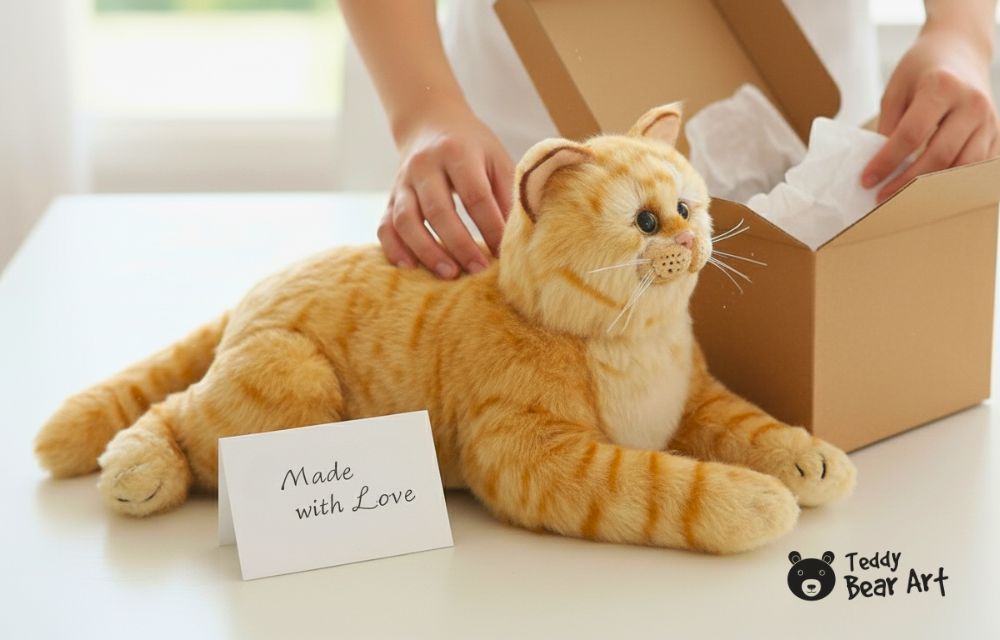
How to Build Trust and Grow Your Business
Keep Customers Coming Back
Happy customers are the heart of your business. After a sale, send a quick thank-you message and kindly ask for a review. Share those reviews on social media — they build trust fast.
Offer small perks for returning buyers: maybe free shipping next time or a tiny discount. You can even make special “custom orders,” like a plush animal made from someone’s baby blanket or old shirt — these become cherished keepsakes.
Avoid Common Mistakes
Don’t undervalue your work. If you set your prices too low, it sends the wrong message about quality. Take time to learn photography — bright, clear images make a big difference. And don’t try to sell everywhere at once. Start with one or two platforms, learn how they work, and grow from there.
Consistency is more powerful than perfection. Show up, share your progress, and your audience will grow naturally.
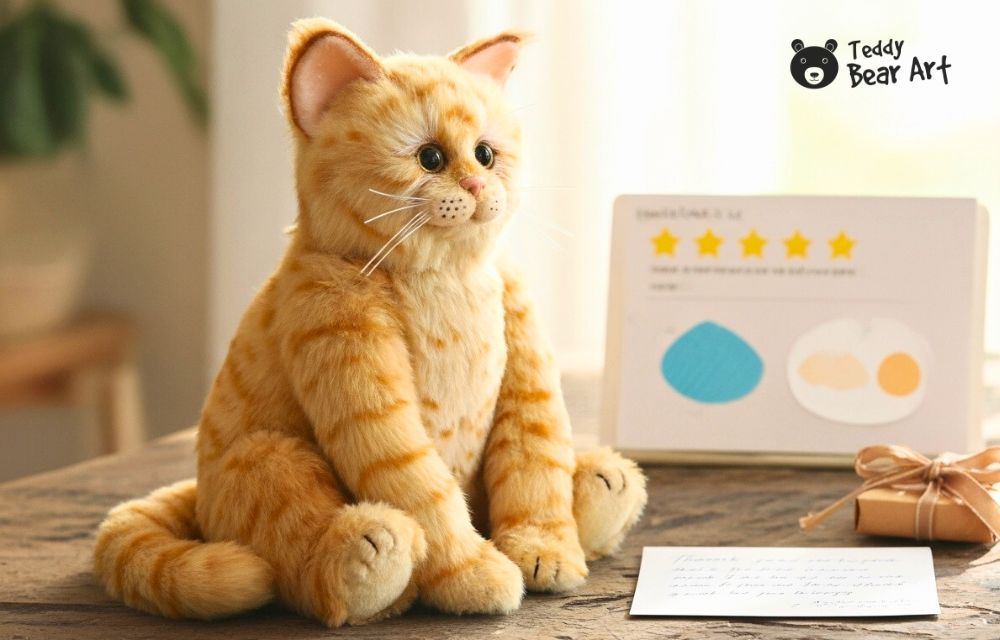
Before You Go
Learning how to sell DIY stuffed animals online isn’t just about opening a shop — it’s about sharing your passion with the world. Every stitch you make carries warmth and kindness that can brighten someone’s day. Start small, stay true to your style, and celebrate every little sale. Who knows? One day, your handmade teddy bears might be traveling farther than you ever imagined — carrying a piece of your heart in every hug.
Get Free Patterns & Be the First to Know!
Want free teddy bear patterns, exclusive tutorials, and a chance to win craft supplies?
Sign up for our newsletter using the subscribe form in the middle of this article to receive new patterns, insider tips, and the latest news on teddy bear art. You’ll also automatically be entered into our annual giveaway for a chance to win teddy bear crafting materials.
Bonus entry: Save one of our pins on Pinterest to increase your chances of winning!
Let’s create, inspire, and craft beautiful teddy bears together!

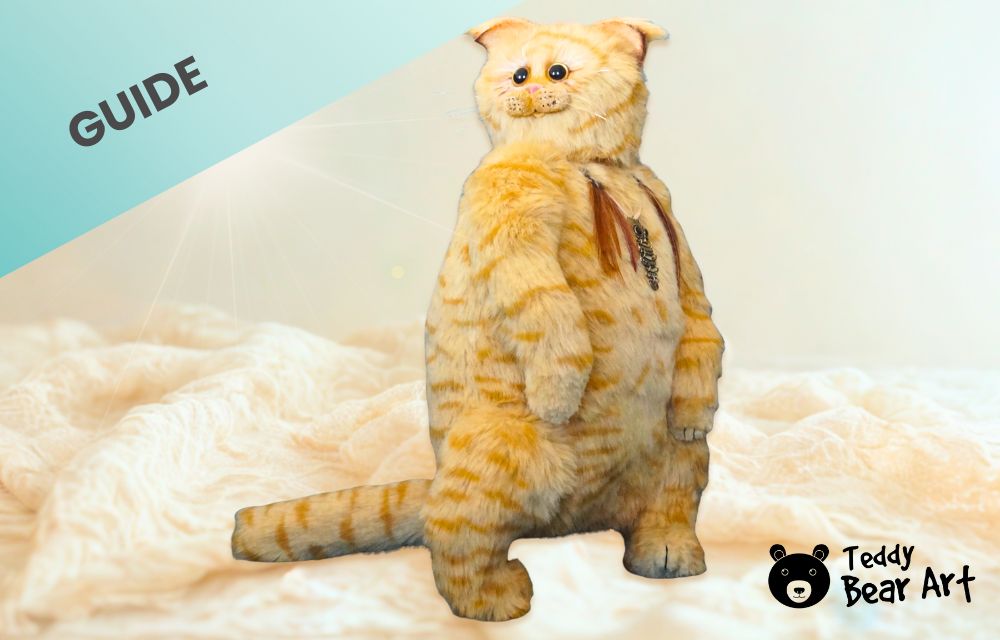
This was such a cozy and practical guide, Hanna. I love how you balanced the creative and business sides of selling handmade stuffed animals. Your reminder that every stitch carries emotion really resonated with me. It’s easy to forget that what makes handmade special isn’t just the product, but the personal story behind it.
I’ve sold a few handmade crafts online before, but I often struggle with pricing. Do you think customers value storytelling enough to justify higher prices, or do they still focus mainly on cost? Your section about giving each toy a name and personality made me think that storytelling could be the key to turning casual buyers into loyal fans.
John
Thank you, John!
You’re absolutely right — every handmade toy carries a bit of the maker’s warmth and emotion. I agree that storytelling can add a special charm and help connect with customers, but I wouldn’t say it’s the most important thing.
A story is just one piece of the puzzle. First and foremost, buyers notice the quality, neatness, materials, and overall character of the toy. Then the story, name, and personality make the creation more memorable and complete.
So the best approach is a mix — skilled craftsmanship plus a touch of soul and storytelling
This is such a helpful and thorough guide! As someone who loves making stuffed animals but finds the business side daunting, this breaks it all down into manageable steps. I found your advice on pricing—especially factoring in the “hidden” time for photography and marketing—to be a real lightbulb moment. It’s so easy to undervalue our work. Thank you for the practical and empowering advice!
Thank you so much for your kind words! I’m really glad you found the guide helpful. Yes, it’s so easy to overlook all those “invisible” parts of the creative process, like photography and marketing—they take time and effort too! I’m happy my tips could make things feel a bit clearer and more doable. Wishing you lots of joy and success with your stuffed animal creations!